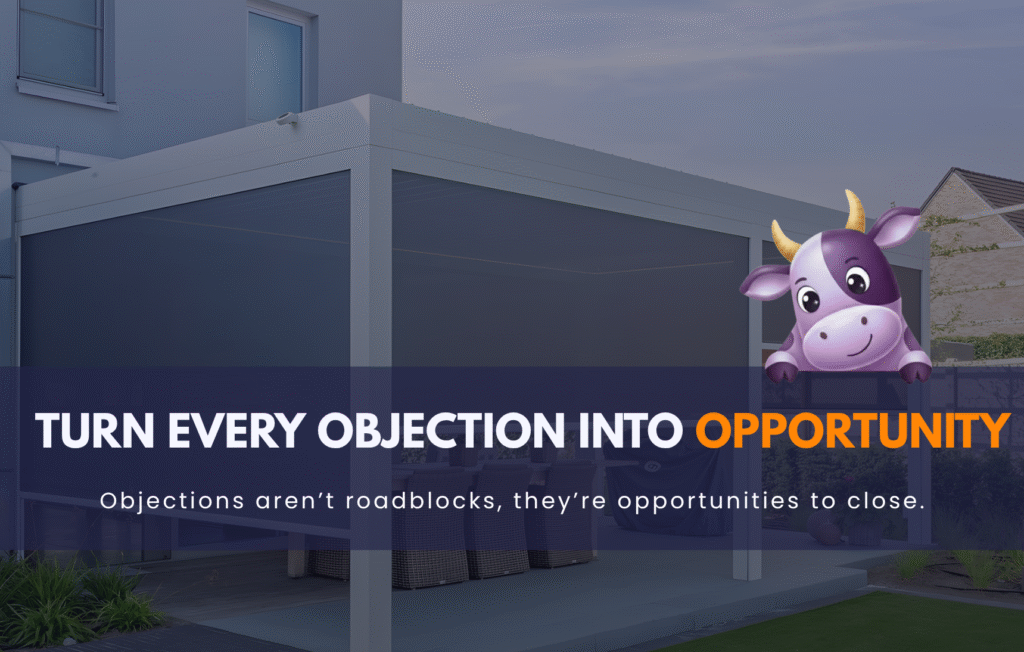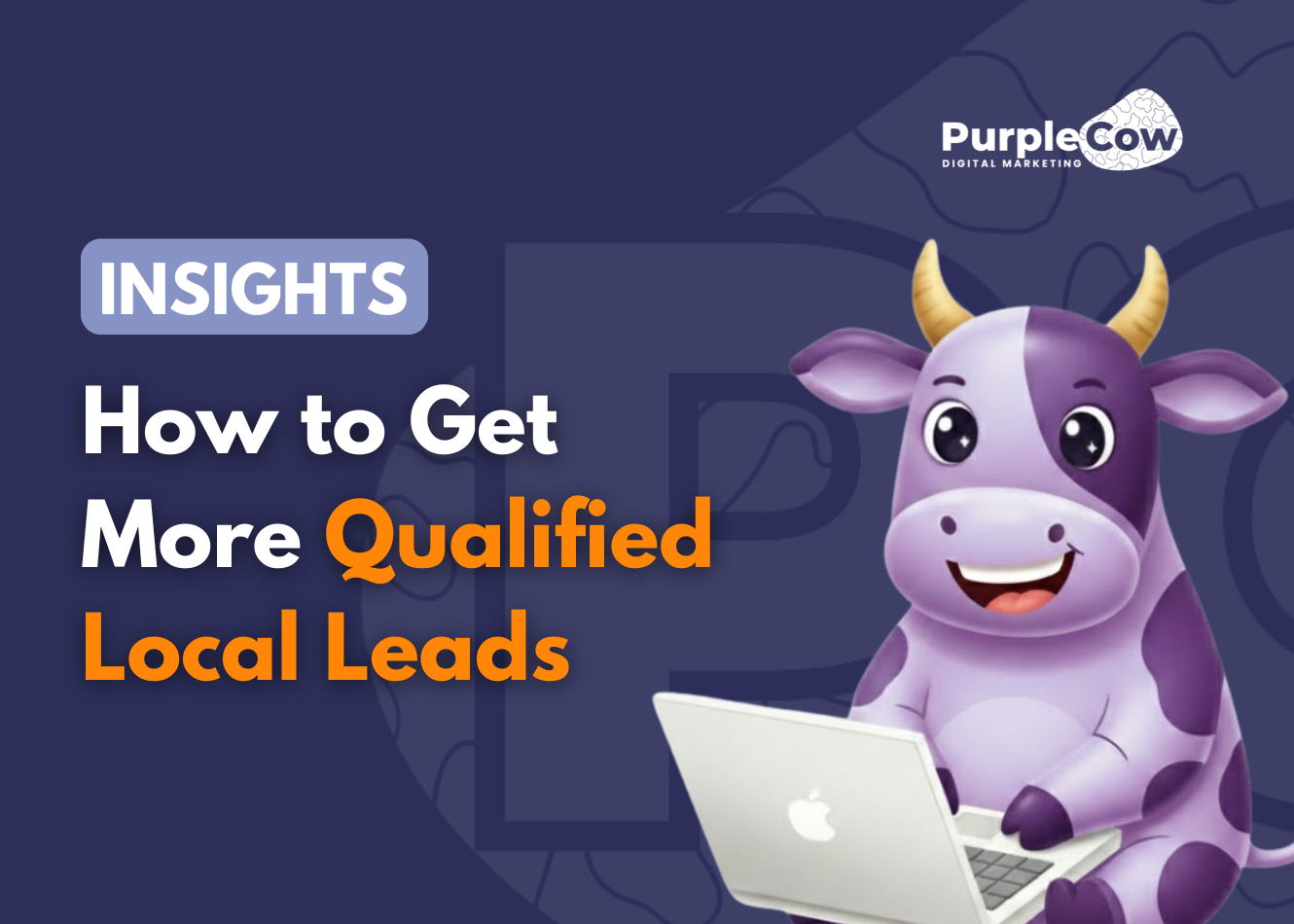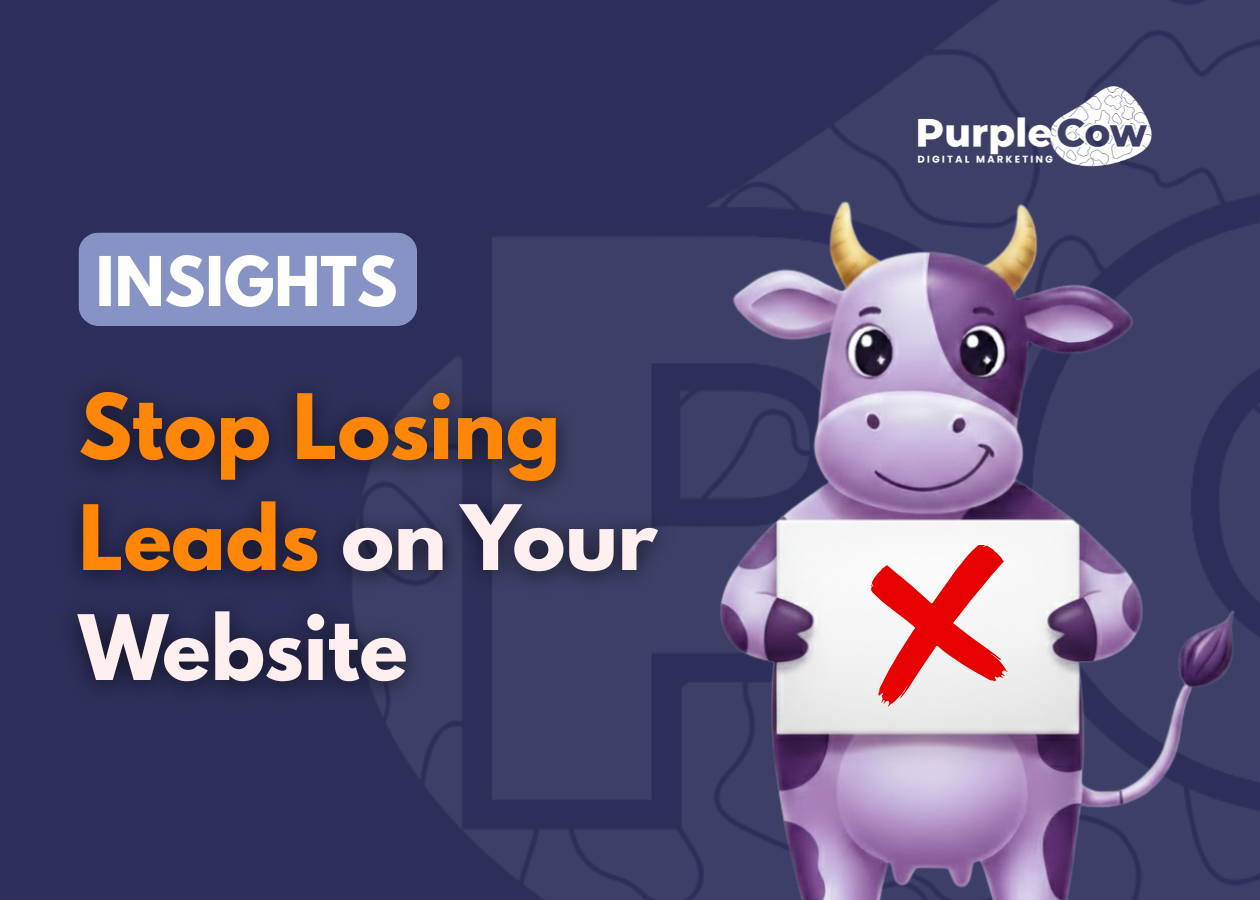When a customer says, “I need to talk to my partner,” or “I’m just getting quotes,” it can feel like the conversation has come to a standstill. For outdoor blinds and shutters businesses, objections like these are a daily occurrence. But in reality, objections don’t have to be roadblocks; think of them as opportunities. Every “maybe later” is a chance to uncover what the customer truly needs and show them why your product is the right choice.
Learning how to manage objections effectively can make the difference between a missed sale and a booked installation. Let’s explore why objection handling matters in outdoor blinds sales and how to respond to the five most common excuses you’re likely to hear.
Why Objection Handling Matters in Outdoor Blinds Sales
Many outdoor blinds businesses spend heavily on marketing to generate leads, only to see them slip away at the quoting stage. Often, the problem isn’t lead quality but what happens during the conversation.
Customers are naturally cautious when it comes to home improvements. They want to feel confident that the product fits their needs, looks right, and delivers long-term value. When those doubts aren’t handled properly, hesitation turns into silence.
Strong objection handling helps bridge that gap. It builds trust, clarifies misconceptions, and positions your business as the expert. Most importantly, it keeps conversations alive long enough for customers to realise the value you provide. Done well, objection handling increases conversion rates without increasing ad spend, which is something every outdoor blinds business owner can appreciate.
The Five Most Common Objections You’ll Hear (and How to Tackle Them)
Every customer has their own reason for hesitating, but in most cases, those reasons fall into a few predictable patterns. Understanding these patterns makes it easier to prepare thoughtful, confident responses that keep your conversations moving forward. Below are the five objections outdoor blinds professionals hear most often and how to turn each one into an opportunity for connection and conversion.
1. “I’m just getting prices.”
This is probably the most common excuse in outdoor blinds sales, and it can sound like a polite way of saying “not interested.” But often, it means the customer is still in the early stages of research and hasn’t yet seen the value behind your offer.
Instead of rushing to discount or disengage, use this as a chance to educate. Ask open-ended questions like, “What kind of blinds are you comparing?” or “What’s most important to you? Is it price, style, or durability?” These questions help you understand their priorities and show that you’re interested in finding the right fit, not just making a sale.
Once you’ve listened, shift the focus from price to value. Explain how Australian-made materials, professional installation, and local aftercare make a difference. Many buyers simply don’t realise how much quality and service can vary. By helping them see what’s included beyond the number on the quote, you give them reasons to stay in the conversation and trust your business.
2. “I need to ask my partner.”
This objection can feel frustrating, but it’s usually genuine. Most households share decision-making on larger purchases, especially for home improvements. Instead of trying to push the sale forward, acknowledge their situation and keep the discussion open.
You might say, “Of course, it’s important that you both feel comfortable with the choice. Would it help if we arranged a time to go through the options together?” Offering a follow-up appointment or video call positions you as helpful rather than pushy.
In the meantime, provide visual aids, such as photos, mock-ups, or short videos, so they can show their partner exactly what’s being discussed. Outdoor blinds are a visual product, and seeing the end result often helps couples move forward together. The goal isn’t to bypass the partner; it’s to make their decision easier.
3. “It’s too expensive.”
When customers bring up price, they’re rarely talking about dollars alone. What they’re really questioning is whether the blinds are worth the investment. The best way to handle this is to shift the focus from cost to value.
Ask what they’re comparing your quote to and help them see the bigger picture. For example, explain how investing in high-quality outdoor blinds improves energy efficiency, reduces sun damage, and adds long-term value to their home. Share real stories from past customers who saved money on cooling or transformed their outdoor area into a usable space year-round.
You can also highlight flexible options such as staged installations or seasonal promotions to make the investment more manageable. By showing how the product adds value over time, you help customers see the price as part of a worthwhile upgrade rather than an expense.
4. “We’re still deciding between a few companies.”
This objection signals that your prospect is shopping around, and that’s okay. It means they’re serious enough to compare, which puts you in the running. Your job is to stand out by being the most trustworthy and professional option.
Start by acknowledging their process: “That’s completely understandable. Choosing the right blinds is a big decision. Can I ask what factors you’re comparing?” Their answer gives you insight into what matters most to them. It may be service, warranty, or installation speed.
Then, differentiate yourself. Highlight what sets your business apart, such as custom measurements, Australian-made products, or dedicated after-sales support. Even small touches like a clearer quote layout or faster communication can tip the balance in your favour. By staying professional, transparent, and responsive, you become the brand that feels safest to choose.
5. “We’re not ready yet.”
When a customer says they’re not ready, it often means they’re unsure about timing or simply hesitant to commit. This is an opportunity to stay connected rather than let the lead go cold.
Ask questions to understand what’s holding them back. Is it the budget? The weather? A renovation timeline? Once you know, you can offer a tailored next step. For instance, “If you’re planning to install later in the year, we can start with measurements now so everything’s ready when you are.”
Even if they decide to delay, follow up with helpful tips or reminders when the timing feels right. A well-timed message about seasonal discounts or summer preparation can bring them back into the conversation. Consistent, thoughtful follow-up keeps your brand top of mind and often turns a “not now” into a “let’s do it.”

Turning Objections into Opportunities
Effective objection handling isn’t about clever comebacks or pressure tactics. It’s about understanding what your customers truly need and communicating value in a way that builds trust. When handled well, objections can reveal valuable insights about your target audience. You can learn what they care about, what they fear, and what kind of reassurance they need to move forward.
And this is exactly where PurpleCow Digital Marketing can help. PurpleCow specialises in helping Australian outdoor living businesses turn hesitant buyers into loyal customers. Through targeted digital marketing, smart website design, and proven lead conversion strategies, PurpleCow helps outdoor blinds companies generate quality leads and close more of them.
If you’re tired of watching potential sales slip away at the quoting stage, it might be time to strengthen your marketing and sales systems. Connect with PurpleCow Digital Marketing today to learn how their strategies can help your business attract ready-to-buy customers and turn more enquiries into confirmed installs.





